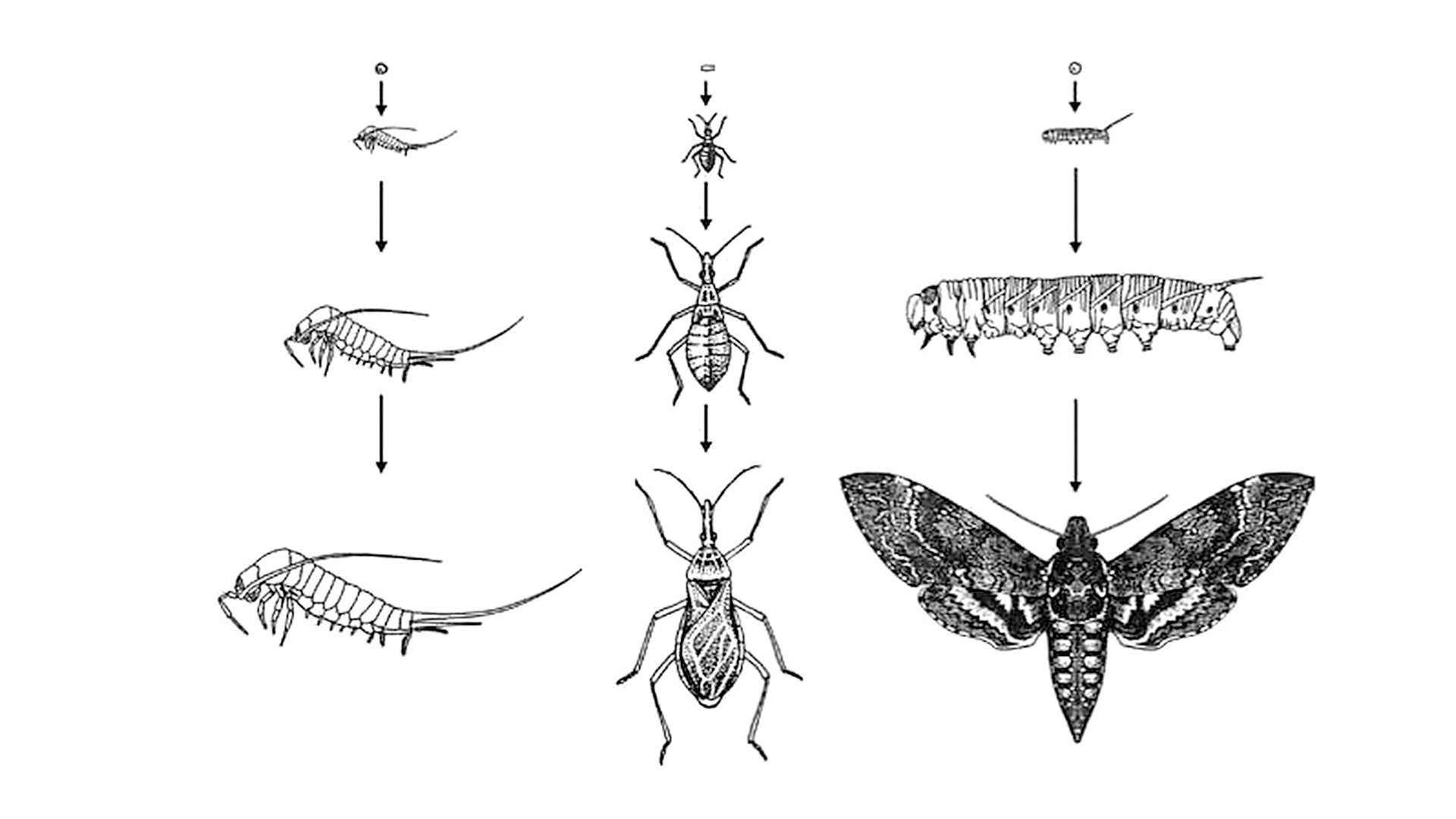 Three types of development in insects;
Left, ametabolous development with no metamorphosis (Thysanura).
Center, hemimetabolous development with particular metamorphosis (Hemiptera).
Right, holometabolous development with complete metamorphosis illustrated by the moth Manduca (Lepidoptera).1
Three types of development in insects;
Left, ametabolous development with no metamorphosis (Thysanura).
Center, hemimetabolous development with particular metamorphosis (Hemiptera).
Right, holometabolous development with complete metamorphosis illustrated by the moth Manduca (Lepidoptera).1
Modulverantwortung: Prof. Annika Seifert, Prof. Luca Deon
Lehrteam: Prof. Annika Seifert, Prof. Luca Deon, Expert: Jürg Conzett
Metamorphosis from Ancient Greek μεταμόρφωσις, “transformation”, from μετα metá, “after” and μορφή morphḗ, “form”.
In his magnum opus Metamorphoses, the Roman poet Ovid strings together hundreds of narratives of mythical transformations and through them tells the story of the world as a sequence of perpetual transformation. Can we also understand the seemingly permanent discipline of architecture as a sequence of different phases of life and functions? Can we even anticipate these typological transformations from the outset?
In the Ticino border community of Chiasso, commuter traffic through the Italian Frontalieri is a challenge for planners.
However, the new underground car parkings currently demanded for the town centre represent a building type, that still seems indispensable for the current situation, but will soon be obsolete due to the foreseeable changes in our mobility. As an alternative, we want to develop a structure that can initially serve as an above-ground car parking; at the same time, we will already design its typological transformation into a second phase of use: housing and public programming. In this way, we’ll experiment with a simultaneous design process – between flexibility and specificity, considering the changing urban situation, the load-bearing and spatial structure, and last but not least, the construction and building process – in order to redefine the building’s lifespan.
Events
Metamorphosis. Design for Transformation
Focus Events / Inputs
Thursdays, Atelier F400